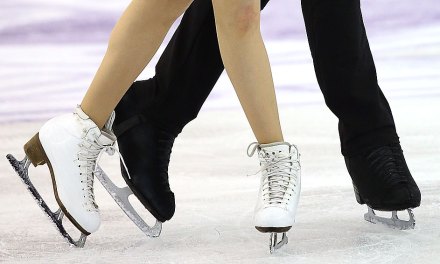by Adrienne Koob-Doddy
Welcome back to the Parents Guide to IJS! On today’s menu we have: Debunking the Technical Score.
There are two parts that come together to make the technical score: the base value score for all elements and the Grade of Execution (GOE) scores. Every element has a predetermined base value (don’t try to memorize these, there are too many!) This is standard across the judging system. Skaters are awarded either positive or negative GOE scores based on how well they completed each element. Naturally, a positive score will add to the base value of that element, and a negative score will subtract from the base value.
You’ve probably heard quite a bit about levels and key points. Your skater might obsess over them, and coaches certainly agonize over them. In pattern dances, levels are determined by key points; the more key points a skater executes, the higher the level for that portion of the dance. In free dance and short dance, the levels for spins/lifts/twizzles are determined by the number of features attained. Step sequence levels are determined by clean turns and dance holds utilized. We could talk about this until we are blue in the face but here are the main things you need to know about levels:
- Levels are slightly more predictable in free dance and short dance because coaches take the time to study the rules and design elements meant to achieve the highest level your skater can execute.
- The criterion for a key point continues to evolve over the course of the season, making this difficult to predict and explain.
- It’s generally a better strategy to strive for the highest level you can, rather than do a simpler element and try for a higher GOE. Positive GOEs come over the course of time, while levels can be achieved from the beginning of the season, if the skaters are capable.
While your skater is competing, the technical panel is identifying the elements as the data operator punches in the codes. Subsequently, the predetermined base value is attached to these elements. While this is happening, the judges are evaluating the quality of the element and awarding their GOE. Some qualities they look for are: speed within the element, how aesthetically pleasing the element is (cringing is never a good sign), how well the element fits the music, and general ease and flow of the element. Once the GOE scores are incorporated into the base score, we now have a total technical score.
Coming next: Program Components & the Headaches They Create!


